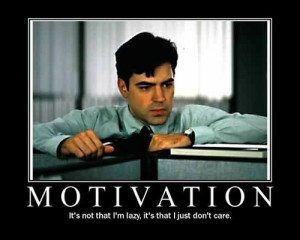On a recent Better Buildings Residential Network call (a Department of Energy Program), one consistent concern was how to get contractors engaged in a program and also doing quality work.
I’ll get right to the point, having seen how many programs work, here are some key pieces to keeping good contractors:
- Stop treating contractors like children, particularly not unwanted ones. Treat them like valued partners. Nothing gets done without them.
- Stop playing games with rules that make selling projects harder.
- Give them real data feedback on how they are doing and help the ones that want to improve.
- Rank them against their peers – create a competition.
Unwanted Children
I’ve heard program managers talk disparagingly about the idiot contractors they have to work with who won’t play by the inane, nonsensical, archaic, and/or draconian rules often handed down from on high. These are real guys trying to make a living who have to produce, they generally don’t get a paycheck for simply showing up. They have real expertise in something. Programs need to leverage what they have, and help teach them what they don’t. Please don’t make them feel like second class citizens.
A Personal Example
This is for a low-income program, but the experience translates. I personally walked out of a meeting with the Cleveland Housing Network when they started calling contractors out publicly over ‘infractions’. Some were real, many were miscommunications, but regardless all of those issues should have been handled one on one, not by shaming them in public without working things out in private first.
My company was accidentally given one of their projects, it took 14 months to get paid, probably 20 hours of admin work, and we had to buy $500 of additional insurance to get paid on a project with a $500 gross margin.
During the process, they told my 25+ year veteran insurance lady that she didn’t know how to do certificates of insurance. Yeah, I felt like a child, and I got an angry call from the insurance office. Then I went to a meeting where I was told what they were paying was getting cut and we were all crooks.
I told them to keep their work. You aren’t going to keep contractors that way. Too many experiences are similar to this that I hear from other contractors and from the attitudes of program implementors.
Consistent Rules
Home Performance projects often take time to execute. During our contracting days, we found a 30-60 day lag with small projects. Today, 3-12 month lags with large projects are common as clients find the money.
With quarterly rule changes (this is California’s schedule) that means that 1-4 rule changes happened before the project executes. This means already trust-challenged contractors have to tell their clients that the rebates aren’t what they thought, or the project has to be reconfigured to meet the new requirements. When you have to sell a project 2-3 times but only get paid once you are on a path to destruction.
That’s friction. Don’t do that. Small rule changes with advanced notice and discussion make contractor lives much easier. Also, every rule change adjusts sales process a little or a lot.
Feedback
How do we all learn and improve? Feedback. In school, we took tests. In life, communication is the key. Try not talking to your spouse for a while and see what happens.
Yet in the energy efficiency world we have this very measurable field where no one measures. Tracking energy results and blower door numbers are both doable, and both are excellent feedback loops for contractors. Yet neither is done.
Ranking
Those two items give us a number of possible ranking categories – predicted and actual results for both energy savings and blower door reductions give us 4 potentials right there.
All of us have a competitive nature, and in my experience contractors are avid competitors. Which contractor have you heard saying they do lousy work, cheap? None of them. They’re all the best. Rank them against each other and create a competition. Now not only do they have a feedback loop, but a marketing tool because they can trumpet their superiority in one or more categories.
Third Party Results
Since rankings are third-party affairs, they have more credence like JD Power or Consumer Reports. If contractors did their own measurement and verification work, it wouldn’t be trusted. Third party rankings are useful as a marketing tool, Energy Smart used to trumpet its Angie’s List rankings, reviews, and number of very highly satisfied clients (and still we found many projects failed to achieve objectives when we followed up, but that’s another story.)
All of This Is Built Into the One Knob Program Design
If programs move to primarily training and supporting contractors who make predictions about job performance, then tracking results to provide a feedback loop, all of the above are possible. In fact they are planned for.
This program design will allow for contractors to be much happier to work with a program, and likely more profitable as well. More profits mean growth. Growth means the Home Performance industry may take less than 500 years to upgrade every existing home.
That fulfills the BHAG of One Knob Consulting to provide the consumer solution to climate change by scaling up Measured Home Performance. It’s a lofty goal, and a big piece of it is making contractors happy. Care to join us?
Image Credit: Mike Lewis Flickr
